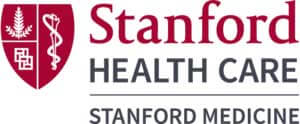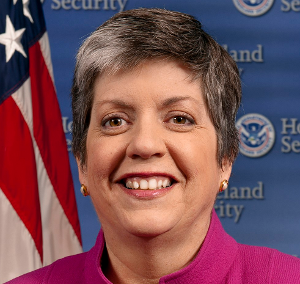We had a chance to sit down with Dr. R. Adams Dudley, M.D., Professor of Medicine and Health Policy, UCSF who will be speaking at our upcoming PMWC 2018 Silicon Valley conference this coming January. He shared with us his views on the current payment model in healthcare, his quality of care research, and pay-for-performance incentivized procedures.
Currently the healthcare payment model is still predominantly based on a fee-for-service model. However, the payment model and underlying structure, as we know it, is changing towards a pay-for-performance model.
Q: What is the ideal payment model we should aim for and why?
A: The ideal payment model may depend on one’s perspective. However, the general consensus among both health policy researchers and policymakers is that we should be headed toward risk-based contacting, especially global payment models with providers at risk for the costs as well as the quality of the care they provide.
Q: Why is it important to strive for a pay-for-performance model? Can you provide some examples?
A: The strongest evidence is pretty simple: National and local studies have repeatedly found that, for aspects of care that are not targeted with some incentive, the right thing is done only just over half the time (about 55%). This is true for diagnostic tests, chronic disease management, and many other areas. In stark contrast, there is a short list of measures for which clinical organizations have incentives to perform better. For most of these, the right thing is done more than 90% of the time.
Q: What impact will a pay-for-performance model have on healthcare, the patient and physician, the pharmaceutical industry, or the health insurance provider?
A: Pay for performance is just one approach to payment reform. The current direction of CMS and most other payers is to combine pay for performance (really, “pay for performance on a small number of quality measures”) with financial risk-based contracts.
Your research interest is in developing measures of quality of care.
Q: Can you explain what this exactly entails and what the goal of this research is? How do you go about to achieve this goal? Can you share some of your research results with this audience?
A: There is widespread evidence of quality and safety problems in medicine. However, the studies that show this have been expensive, because legacy approaches to measuring performance are very expensive. If we could measure performance more accurately and at lower cost, we would have important tools that health care managers and policymakers could use to incentivize health care organizations to do better. Our team is making good progress with this. For instance, we have used big data and machine learning approaches to dramatically improve risk adjustment for predictive analytics like estimated the expected mortality rate and average length of stay for intensive care unit patients. These are foundational tools for those who would improve ICU performance.
You have been involved in randomized trials of pay-for-performance incentives and programs to assess the appropriateness of high cost procedures.
Q: Can you tell us more about what you’ve learned from these trials and how we can translate some the learnings into favorable value-based/for-performance payment models?
A: We did a trial in New York City with physicians in small practices that had a high proportion of low income patients. These are the settings—practices with uninsured and Medicaid patients (hence lower profits) and little scale (hence little ability to spread the costs of adopting good business systems across many patients)—in which improvement should be hardest. Nonetheless, when we randomized those practices to receive pay for performance incentives, they clearly improved their care.
Q: Is there anything else you would like to add?
A: Not all pay for performance projects have shown benefit of this payment method. The success of our program probably reflects not just the impact of the general concept of pay for performance, but also three other features of the program: 1) we allowed the physician practices to help decide what parts of care were important (which ones to target with incentives), so we knew the physicians thought improving care was a good clinical goal, 2) we gave the physician practices some say in how big the incentives needed to be (matching costs to revenues), and 3) we made sure the practices could get timely information about how they were doing, so they could try different strategies and see how they improved.
The Precision Medicine World Conference (PMWC), in its 17th installment, will take place in the Santa Clara Convention Center (Silicon Valley) on January 21-24, 2020. The program will traverse innovative technologies, thriving initiatives, and clinical case studies that enable the translation of precision medicine into direct improvements in health care. Conference attendees will have an opportunity to learn first-hand about the latest developments and advancements in precision medicine and cutting-edge new strategies and solutions that are changing how patients are treated.
See 2019 Agenda highlights:
- Five tracks will showcase sessions on the latest advancements in precision medicine which include, but are not limited to:
- AI & Data Science Showcase
- Clinical & Research Tools Showcase
- Clinical Dx Showcase
- Creating Clinical Value with Liquid Biopsy ctDNA, etc.
- Digital Health/Health and Wellness
- Digital Phenotyping
- Diversity in Precision Medicine
- Drug Development (PPPs)
- Early Days of Life Sequencing
- Emerging Technologies in PM
- Emerging Therapeutic Showcase
- FDA Efforts to Accelerate PM
- Gene Editing
- Genomic Profiling Showcase
- Immunotherapy Sessions & Showcase
- Implementation into Health Care Delivery
- Large Scale Bio-data Resources to Support Drug Development (PPPs)
- Microbial Profiling Showcase
- Microbiome
- Neoantigens
- Next-Gen. Workforce of PM
- Non-Clinical Services Showcase
- Pharmacogenomics
- Point-of Care Dx Platform
- Precision Public Health
- Rare Disease Diagnosis
- Resilience
- Robust Clinical Decision Support Tools
- Wellness and Aging Showcase
See 2019 Agenda highlights:
- Five tracks will showcase sessions on the latest advancements in precision medicine which include, but are not limited to:
- AI & Data Science Showcase
- Clinical & Research Tools Showcase
- Clinical Dx Showcase
- Creating Clinical Value with Liquid Biopsy ctDNA, etc.
- Digital Health/Health and Wellness
- Digital Phenotyping
- Diversity in Precision Medicine
- Drug Development (PPPs)
- Early Days of Life Sequencing
- Emerging Technologies in PM
- Emerging Therapeutic Showcase
- FDA Efforts to Accelerate PM
- Gene Editing / CRISPR
- Genomic Profiling Showcase
- Immunotherapy Sessions & Showcase
- Implementation into Health Care Delivery
- Large Scale Bio-data Resources to Support Drug Development (PPPs)
- Microbial Profiling Showcase
- Microbiome
- Neoantigens
- Next-Gen. Workforce of PM
- Non-Clinical Services Showcase
- Pharmacogenomics
- Point-of Care Dx Platform
- Precision Public Health
- Rare Disease Diagnosis
- Resilience
- Robust Clinical Decision Support Tools
- Wellness and Aging Showcase
- A lineup of 450+ highly regarded speakers featuring pioneering researchers and authorities across the healthcare and biotechnology sectors
- Luminary and Pioneer Awards, honoring individuals who contributed, and continue to contribute, to the field of Precision Medicine
- 2000+ multidisciplinary attendees, from across the entire spectrum of healthcare, representing different types of companies, technologies, and medical centers with leadership roles in precision medicine












